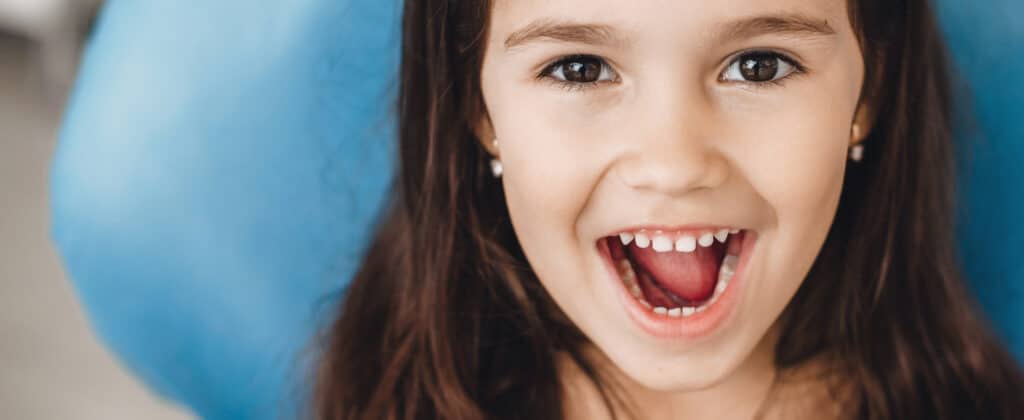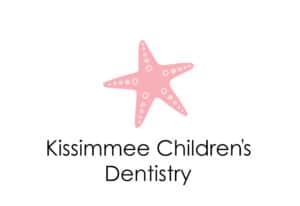Information For Infants & Toddlers
At Kissimmee Children’s Dentistry we want your child to grow with a lifetime of healthy smiles with teeth and gums in pristine condition. In order to achieve this, diligent care must start with the first tooth.
Many parents and children make the mistake of neglecting primary teeth because they recognize that these teeth will be replaced. However, primary teeth serve an important purpose for aiding your child in chewing, speaking, and smiling until they are seven years old. Not only that, but they also reserve space for permanent teeth to emerge.
By learning a healthy cleaning regimen and caring for teeth and gums properly at a young age, your child will be on the path to brighter smiles for a lifetime!
Caring for Your Child’s Gums
Taking excellent care of your baby’s mouth starts before their first tooth appears. Maintaining the health of their gums can benefit their smile in the future. After feeding, gently rub your baby’s gum tissue with a clean, damp washcloth or piece of gauze. The purpose of this is to both clean your little one’s mouth and begin establishing a daily routine of dental care.
Your Baby’s First Tooth
Once a baby’s first tooth appears, you may need to upgrade to a baby toothbrush. Most often, you can choose between two types of toothbrushes: a toothbrush with a long handle that you and your baby can both hold, or a brush that fits over the tip of your index finger.
Both of these brushes have extra-soft bristles that are made especially for your baby’s teeth and gums. It isn’t necessary to use toothpaste at this point in your baby’s oral hygiene regimen; we suggest instead dipping the brush in warm water before brushing.
If your child does not react well to the introduction of a toothbrush, be patient. Try switching back to a damp washcloth for a few months before trying a toothbrush again. You may want to consider purchasing a baby toothbrush that comes with a teether so that your child becomes accustomed to the brush before proceeding.
Brushing with Toothpaste
As your child’s teeth continue to grow and more teeth appear, you can use toothpaste with the child’s brush. For the first two years, however, make sure that you choose toothpaste without fluoride unless your dentist instructs you otherwise. Too much fluoride can be harmful to young children. Make sure to use only a small amount of toothpaste to brush your infant’s teeth at this stage.
You should also have your child practice spitting out the toothpaste after brushing, this will prepare them to go on to fluoride toothpaste, which is not suitable to swallow.
Avoiding Cavities
Sugary liquids such as flavored drinks and sodas should never be given to your baby. There are also sugars in the following drinks that may be responsible for decay:
- Fruit juice
- Formula
- Milk (including breast milk)
In order to prevent cavities, it is essential to regularly clean and brush your child’s teeth and gums.
Additionally, you should make sure your baby never goes to sleep with a bottle. When sugary liquids are exposed to your baby’s teeth for an extended period of time, they may lead to early childhood tooth decay, also known as “baby bottle caries”.
First Visit to the Dentist
We recommend that you bring your child to our office within six months of their first tooth emerging. During this visit, we will check for any early signs of decay or other problems with your child’s oral health. This will give your child the best chance at avoiding cavities and keeping their teeth and gums healthy.
Infant Oral Health & Setting a Good Example
Children love to watch and learn from the world around them and are constantly looking for words, behaviors, or actions to mimic. When teaching your child about dentistry, this trait may work in your favor.
Allow your child to watch you brush and floss and tell them about how exciting the activity is! Make sure to also let them know the importance of oral health and the benefits it can provide. Encourage them to join you by brushing too, and use the opportunity to teach them the proper technique.
Generally, children don’t have the ability to properly clean their own teeth until they are between the ages of six and eight, so you will need to help guide them and ensure their teeth are properly cleaned. To make the oral hygiene routine fun, try one (or a combination of) the following ideas:
- Purchase flavored toothpaste
- Allow your child to pick their own toothbrush
- Read fun stories about dental care or dentist appointments
- Sing songs about brushing teeth
What Is Normal Thumb-Sucking Behavior?
Thumb sucking is considered normal for most children up to the age of four. This is a reflex that comes naturally to them and gives the child a sense of contentment and comfort. While most children simply grow out of the habit, some may become more attached to thumb sucking and struggle to abandon the behavior. They may do this to cope with emotional stress or a lack of security in difficult situations.
With a little help, you can support your child in eliminating the act and replace thumb sucking with healthier alternatives.
How Can I Help My Child Quit Thumb-Sucking?
- Rather than reprimanding or punishing your child, be positive and supportive in encouraging them to break their habit.
- When you notice them not sucking their thumb, offer praise.
- Give them a gentle reminder if they appear to be putting their thumb in their mouth.
- Try new activities that keep their hands busy (arts and crafts, dancing, baking, playing with toys, etc.)
Regardless of the method you choose, be sure to always remember that your child needs your unconditional support and understanding when it comes to quitting thumb-sucking.


